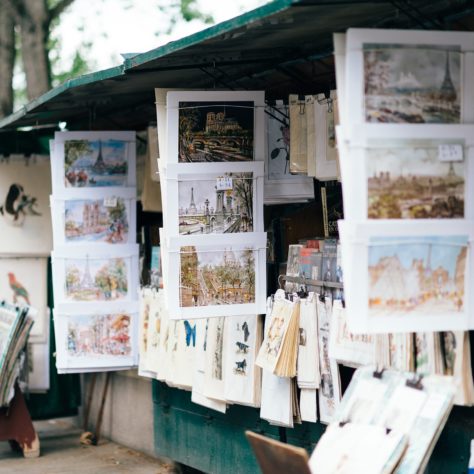Paris is like a Babel of history, cultures and arts mix up – often in a bizarre way – among the city arrondissement. However, how to find those curious world spots that were able to create themselves 2some space in the Parisienne world?
Let’s begin to discover these curiosities starting from Place de La Concorde: at 242 of Rue de Rivoli, you can find a super secret and really chic Swedish club, where Alfred Nobel, the inventor of dynamite, signed the will that gave life to the Nobel prize. The office has remained the same since 1895 and it can be visited twice a month, on Wednesdays.
These events, clearly not thoroughly advertised, give the opportunity to enjoy a dinner with a view of the Jardin les Tuileries, accompanied by a Swedish menu.
If you want to move from the cold north to an Egyptian atmosphere, you are just six Metro stops away from Passage du Claire (2, place du Caire – 16, rue du Caire – 239, rue Saint-Denis), the oldest covered passage of the city. It hosts uninteresting stores, but it’s worth a visit for the facade that faces Place Du Caire, which is decorated with hieroglyphs and three effigies of goddess Hator, the ultimate goddess of femininity.
This place is full of mystery and curiosity: it was created in the area in which there were the Filles- Dieu convent and it seems that the pavement was made of nuns’ tombstones. It’s interesting how, wit time, it has become a “court of miracles”, where thieves and scammers met up to plan their days, and then meet up again at night with the loot.
Remaining in the heart of the capital, a without doubt curious and romantic stop is the Polish Library (6 Quai d’Orléans, 75004 sull’Île Saint-Louis, the smallest of the river Seine’s natural islands). This very simple building, since 1853, is host to the biggest institution representing Poland abroad. Created in 1832 by immigrants of the strong Russian occupation, today it owns more than 200.000 books and works, some of them are even extremely rare.
Inside this building there are also three other museums, dedicated to the most famous polish artistic figures: Adam Mickiewicz, poet that symbolizes the national unit, Boleslaw Biegas, surrealist and symbolist painter, and obviously Fryedryk Franciszek Chopin, also known by his French name Frédéric François Chopin.
If we move on to the extreme orient, one of the most fascinating places is no doubt the Cinema “La Pagode” (52, Rue de Babylone), which is unfortunately it’s permanently closed but it can be viewed from the outside. In the late 1800s, Japan was very fashionable in the city, so the owner of the department store Le Bon Marché decided to give to his wife an authentic Japanese pagoda. Its inauguration with the Orchestra of Paris’ Theatre is still remembered today. However, that was not enough his companion and she broke up with him, so he sold her wonderful pagoda. The Chinese embassy started getting interested in the building, but soon realized that the paintings inside were about the Japanese domination towards China. In 1931 it was transformed into a wonderful cinema, with a gracious tearoom in an inside garden. Unfortunately, it closed at the end of 2015.



